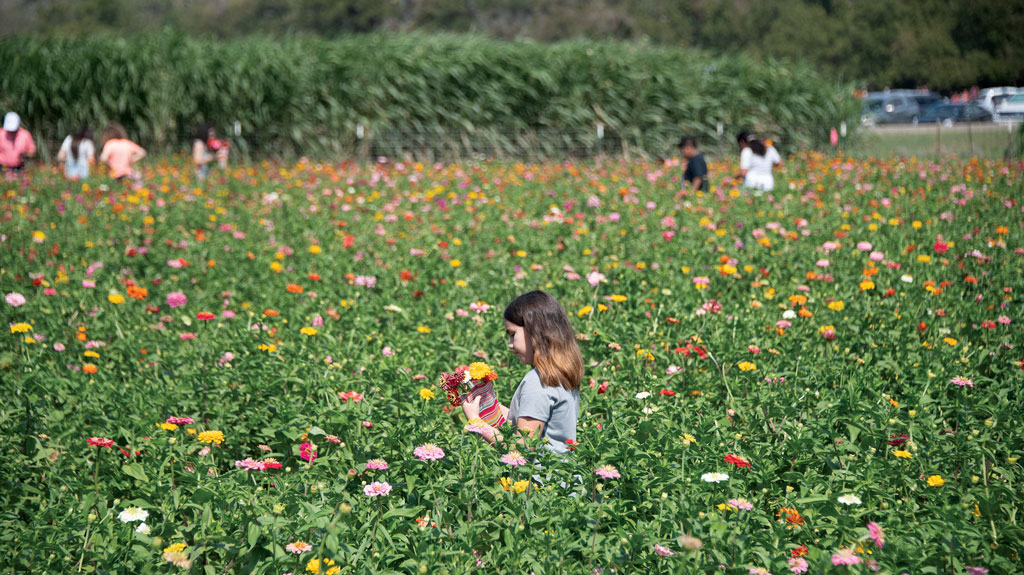
May is the time to plant bulbs for summer flowering plants like hyacinths.
[image id="23316" title="Luedecke" linkto="file" ] Bill Luedecke and daughter Martelle offer advice to Highland Lakes gardeners.
Replace or replenish mulch in the flowerbeds and vegetable garden.
It’s time to deadhead the blooms from geraniums, pansies, snapdragons, stock, and calendulas. Deadhead means to remove the spent blooms. This practice encourages the continuation of the blooms. The more you take away of the dead, the more blooms replace them. Pretty cool deal.
Plant caladium tubers, petunias, impatiens, and begonias in well-prepared, shady or partly shaded areas.
It is still time to plant seeds for sunflowers, zinnia, morning glories, marigolds, periwinkles, and gourds.
Plant dahlias, cannas, and other summer flowering bulbs. Allow foliage of spring-flowering bulbs to mature and yellow before removing.
Continue to feed roses every four to six weeks with organic rose food.
Remember: Vegetables usually prefer a more acidic pH than our native soil provides.
WILDFLOWERS
You can tell if a bluebonnet has been pollinated by looking at the flower. Where there normally was a white spot in the middle of the blue, if pollinated, it will be pinkish red. Pollinated blooms turn to seed.
Once the flower has begun the pod cycle, it is tempting to mow because it might not be as pleasing to the eye. But WAIT! Don’t mow your expired wildflowers until the seed pod is ready and viable for next spring.
You can check to see if a bluebonnet seed pod is ready by jiggling it a little. If it makes a sound, like a baby rattle, then it has completed its cycle. Bluebonnet seed pods twist and propel their seeds up to 10 feet. Each seed pod contains three years of seed, meaning that from that seed pod, some seeds will germinate next year, some the year after, and some the year after that.
DROUGHT- AND HEAT-TOLERANT
If you have been preparing your soil as we have discussed in previous months then your plants should be very healthy and happy. In case you missed some of those articles, here is a synopsis.
First, do a soil test and send it to:
(By U.S. mail)
Soil, Water and Forage Testing Laboratory
2478 TAMU, College Station, TX 77843-2478
(By other couriers: FedEx, UPS, etc.)
Soil, Water and Forage Testing Laboratory
2610 F&B Road, College Station, TX 77845
For more information, call (979) 845-4816, fax (979) 845-5958, or email soiltesting@tamu.edu.
When you receive the results, you will know what to add to your soil.
You always need to add natural products that bring life to your soil. We are talking about microorganisms that need to be restored and energized. This can be done by adding humic acid, seaweed extract, molasses, etc.
A simple and easy way to accomplish this desired result is to purchase those products already packaged such as Terra Tonic Super Soil Activator, Medina Soil Activator, and many others. A good dose of compost and activated compost tea always hits the spot. After you have done the rest, add the mulch for further protection.
All-natural nurseries will have these products, and if they don’t, they can order them for you.
Keep your souls and soles in your garden!
Remember the True Master Gardener: Jesus said, “I am the vine; my Father is the Gardener.” John 15:1 Contact Bill Luedecke at The Luedecke Group Realtors at (512) 577-1463 or email him at bill@texasland.net. Contact Martelle Luedecke at (512) 769-3179 or luedeckephotography@gmail.com.












